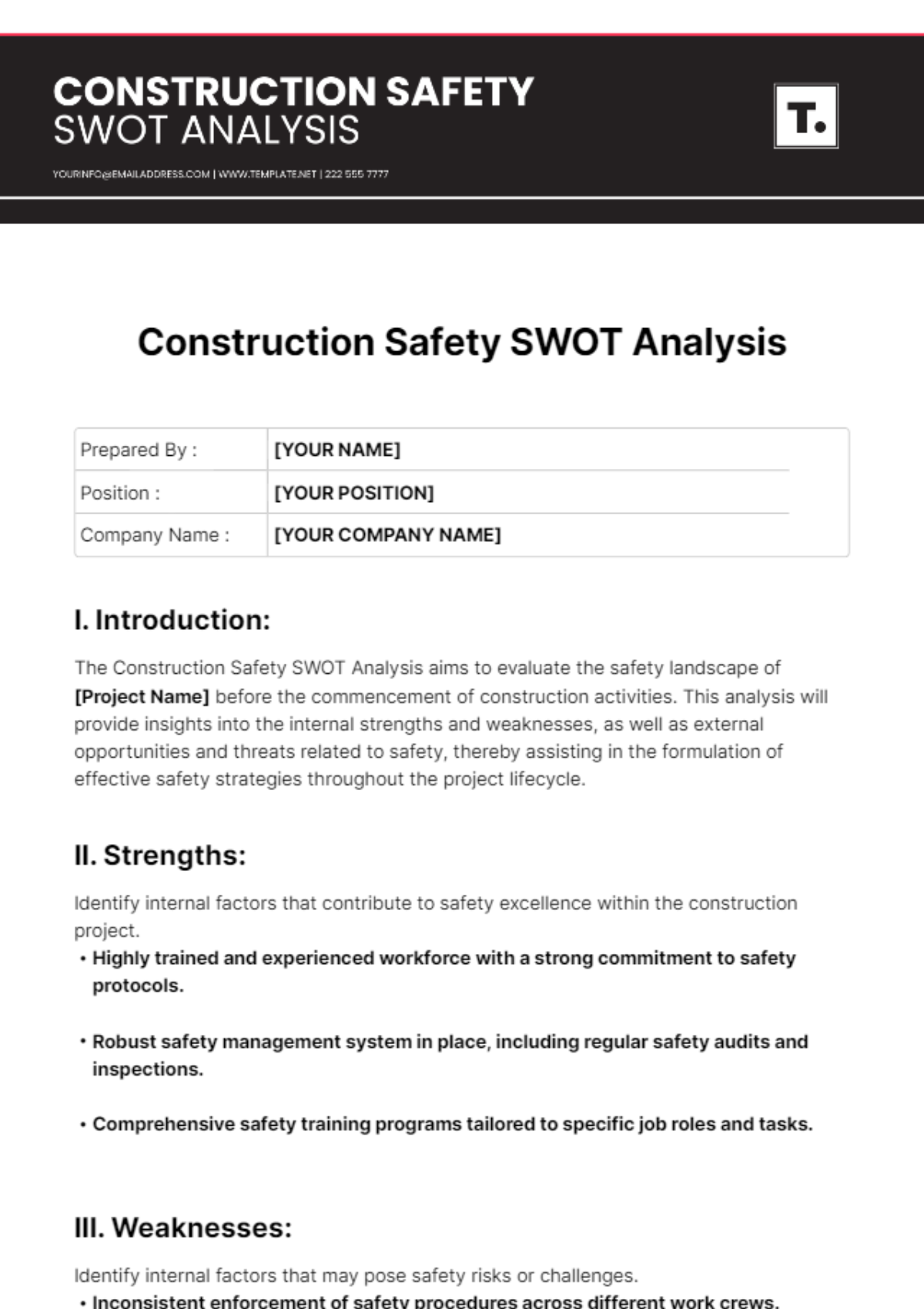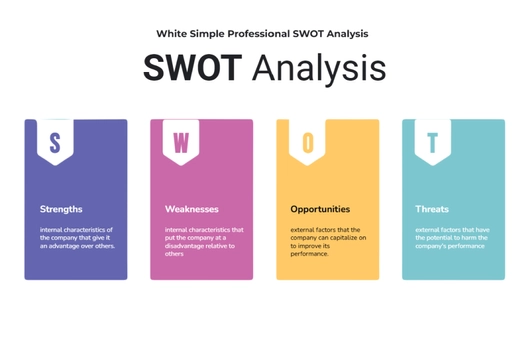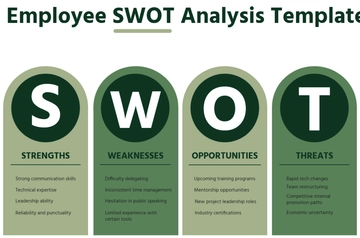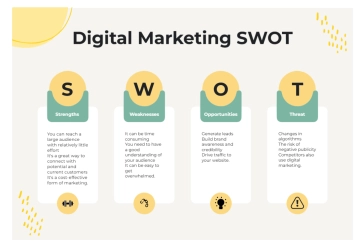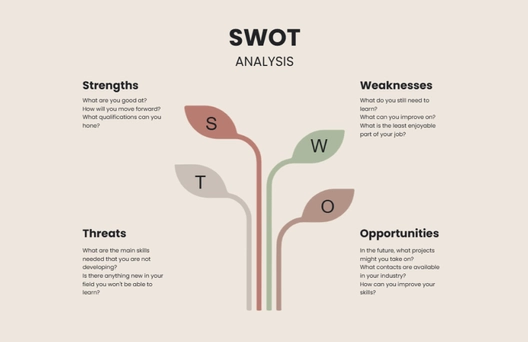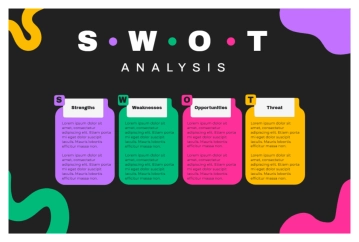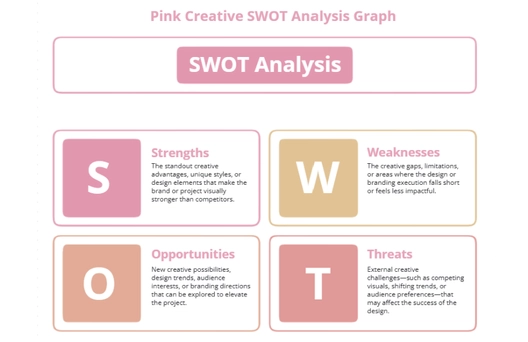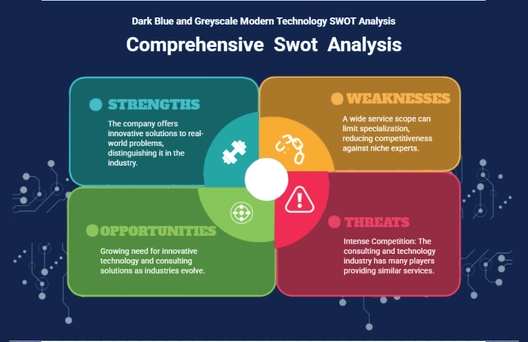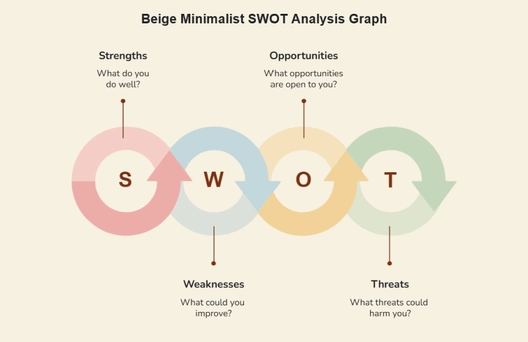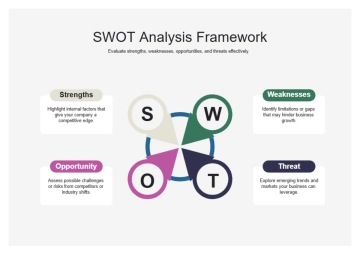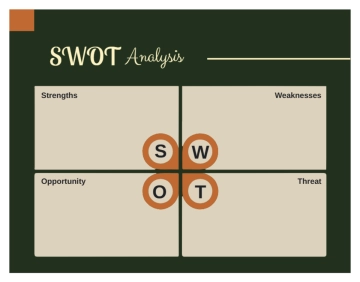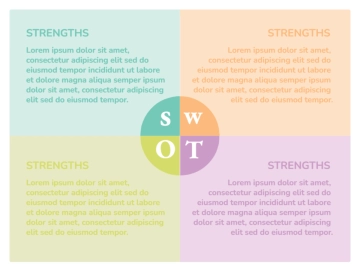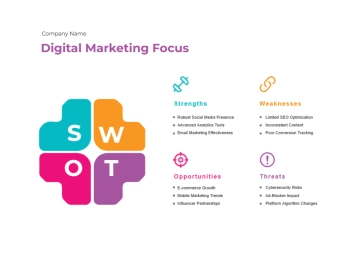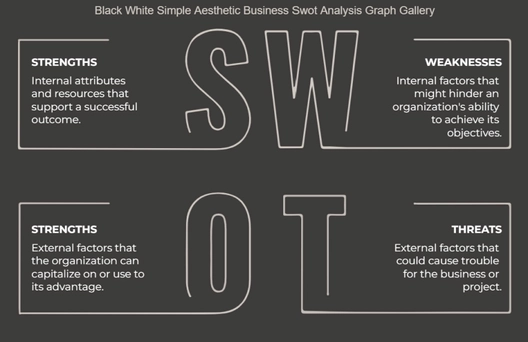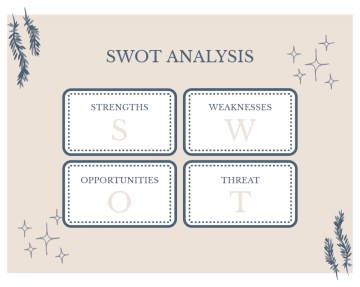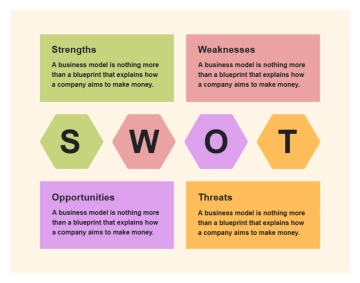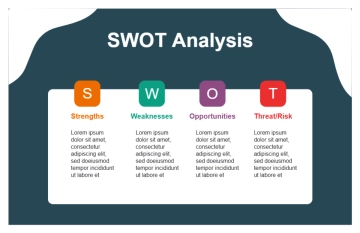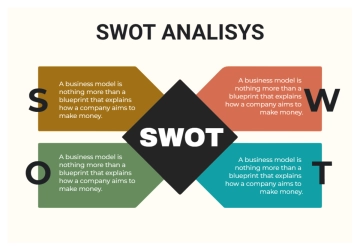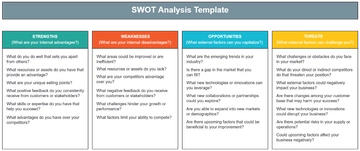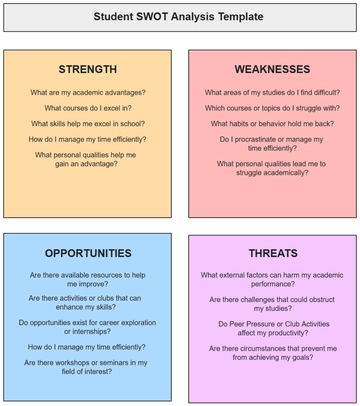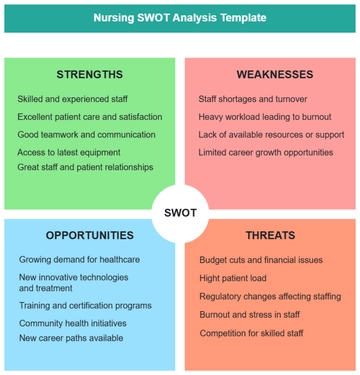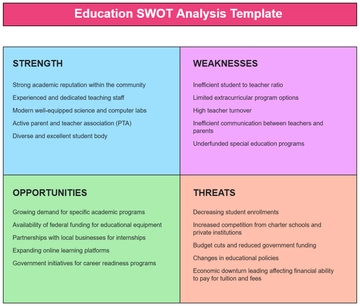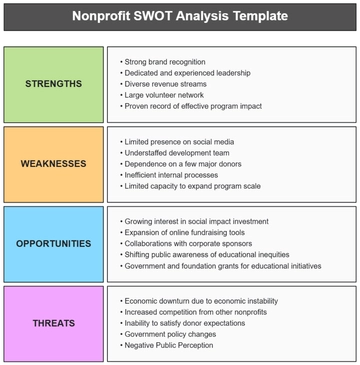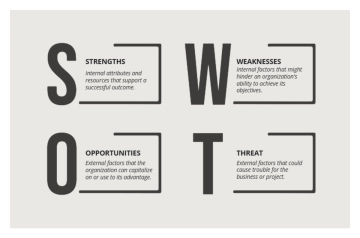Construction Safety SWOT Analysis
Prepared By : | [YOUR NAME] |
Position : | [YOUR POSITION] |
Company Name : | [YOUR COMPANY NAME] |
I. Introduction:
The Construction Safety SWOT Analysis aims to evaluate the safety landscape of [Project Name] before the commencement of construction activities. This analysis will provide insights into the internal strengths and weaknesses, as well as external opportunities and threats related to safety, thereby assisting in the formulation of effective safety strategies throughout the project lifecycle.
II. Strengths:
Identify internal factors that contribute to safety excellence within the construction project.
Highly trained and experienced workforce with a strong commitment to safety protocols.
Robust safety management system in place, including regular safety audits and inspections.
Comprehensive safety training programs tailored to specific job roles and tasks.
III. Weaknesses:
Identify internal factors that may pose safety risks or challenges.
Inconsistent enforcement of safety procedures across different work crews.
Limited availability of personal protective equipment (PPE) for certain high-risk tasks.
Lack of regular safety meetings and toolbox talks to reinforce safety awareness.
IV. Opportunities:
Identify external factors or opportunities for improving safety practices.
Adoption of innovative safety technologies, such as drones for site inspections and monitoring.
Collaboration with local safety authorities and industry organizations to access additional safety resources and expertise.
Integration of virtual reality (VR) and augmented reality (AR) simulations for immersive safety training experiences.
V. Threats:
Identify external factors or potential threats to construction safety.
Unforeseen weather events, such as heavy rain or extreme temperatures, impacting site safety and productivity.
Changes in regulatory requirements or safety standards, leading to compliance challenges and potential penalties.
Increased competition for skilled labor, resulting in potential compromises in safety due to workforce shortages.
VI. Conclusion:
In conclusion, the Construction Safety SWOT Analysis highlights the critical areas where improvements can be made to enhance safety performance on [Project Name]. By leveraging internal strengths, addressing weaknesses, capitalizing on opportunities, and mitigating threats, proactive measures can be implemented to ensure a safe and secure work environment for all project stakeholders.
Audience:
Primary Recipient: [Construction Team]
Secondary Recipients: [Stakeholders, Safety Committee, Regulatory Bodies, etc.]
Purpose:
To assess potential safety risks before construction begins and to develop proactive measures for mitigating those risks.
Contact Information:
